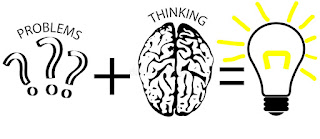Problem Solving: Five Problem Solving Approaches & Steps Respectively

Problem Solving: Five Problem Solving Approaches & Steps Respectively
 |
| Problem solving | Image reference: dreamstime.com |
Problem solving entails the identification of a problem or challenge, identifying the cause thereof, and defining, organizing prioritizing, organizing and selecting steps to mitigate those challenges.
Simply put, problem solving could be defined as any way or ways by which solutions are developed to remove an obstacle or obstacles from achieving an ultimate goal.
There are various problems and challenges requiring solutions ranging from simple problems in our daily personal and private lives, to complex problems in business, academic or social lives, government, etc.
The five problem-solving approaches include:
Hypothesis-led Approach: This approach requires having a hypothesis or hypotheses upfront. It takes a structured approach to test those hypotheses while asking such questions like what are the hypotheses trying to prove or disapprove and make assertions based on them. Thoughts about the structuring and prioritization of the work to be done governs the testing of those hypotheses to get to a better result.
This approach has the following steps:
- Define Problem
- Prioritize Issues
- Develop Issue Analysis/Workplan
- Conduct Analyses
- Synthesize Findings
- Develop Recommendations
Typical problems in this domain include:
Company/business unit strategy
M&A
Market entry decision
Domain IP-led Approach: This approach refers to a domain expertise you have to get a job done quickly. It is an accelerated version of the Hypothesis-led approach.
This approach entails the following steps:
- Define the problem
- Developing data preparation or scoping
- Apply IP
- Synthesis findings
- Develop recommendations
Typical problem domains/examples include:
Procurement, and healthcare analytics.
Advanced Analytics Approach: The Advanced Analytics approach is used when you have a large data set, and it concerned with how non-obvious insights could be developed from the large data set.
This approach entails the following steps:
1. Ideation
2. Intelligence
3. Inception
4. Interventions
5. Independence
Typical problem domains/examples include:
R&D Optimization, Pricing Optimization & Acquisition/Churn Analysis.
Design Thinking Approach: The design thinking approach is a human-centric approach. It deals with understanding the needs of the customers/clients/persons we wish to address their needs, identifying their pain points, and putting out solutions/designs to address those needs or pain points.
This approach entails the following steps:
1. Discover
2. Design
3. Deliver
Typical problem domains/examples include:
Employee Experience, Customer Value Proposition, Service/Product Innovation.
Engineering Approach: This is an iterative process that involves de-risking assumptions by building a product known as Minimum Viable Product (MVP) which is sent into the market to gather customer feedback. The lessons learnt from the MVP are used to build other products for the continuation of the iterative process until the product is built that solves the need or problem of the customers/clients/people.
This approach entails the following steps:
1.Problem Definition (Define Problem)
2. First MVP Launch
3. Test & Iterate
4. Output
Typical problem domains/examples include:
Data Engineering/Architecture, Digital Product Development, Cloud Adoption.


.png)








Post a Comment